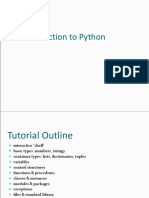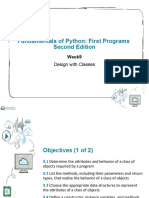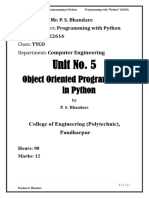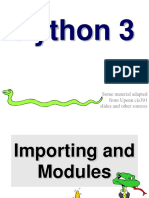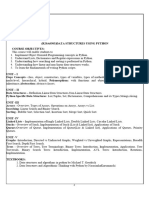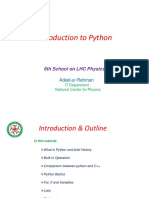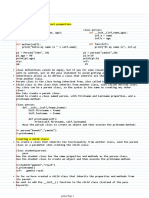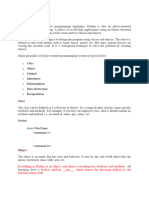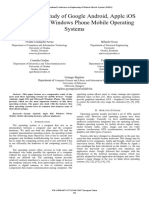0% found this document useful (0 votes)
12 views24 pagesLecture 6
This document covers list comprehension in Python, highlighting its advantages over traditional for loops for creating lists. It also introduces Object-Oriented Programming (OOP) concepts, including classes, objects, and methods, and provides examples of how to define and use classes. Additionally, it discusses the NumPy library for data manipulation and analysis, showcasing how to create and manipulate arrays.
Uploaded by
shahbazhussain1278Copyright
© © All Rights Reserved
We take content rights seriously. If you suspect this is your content, claim it here.
Available Formats
Download as PDF, TXT or read online on Scribd
0% found this document useful (0 votes)
12 views24 pagesLecture 6
This document covers list comprehension in Python, highlighting its advantages over traditional for loops for creating lists. It also introduces Object-Oriented Programming (OOP) concepts, including classes, objects, and methods, and provides examples of how to define and use classes. Additionally, it discusses the NumPy library for data manipulation and analysis, showcasing how to create and manipulate arrays.
Uploaded by
shahbazhussain1278Copyright
© © All Rights Reserved
We take content rights seriously. If you suspect this is your content, claim it here.
Available Formats
Download as PDF, TXT or read online on Scribd
/ 24


















